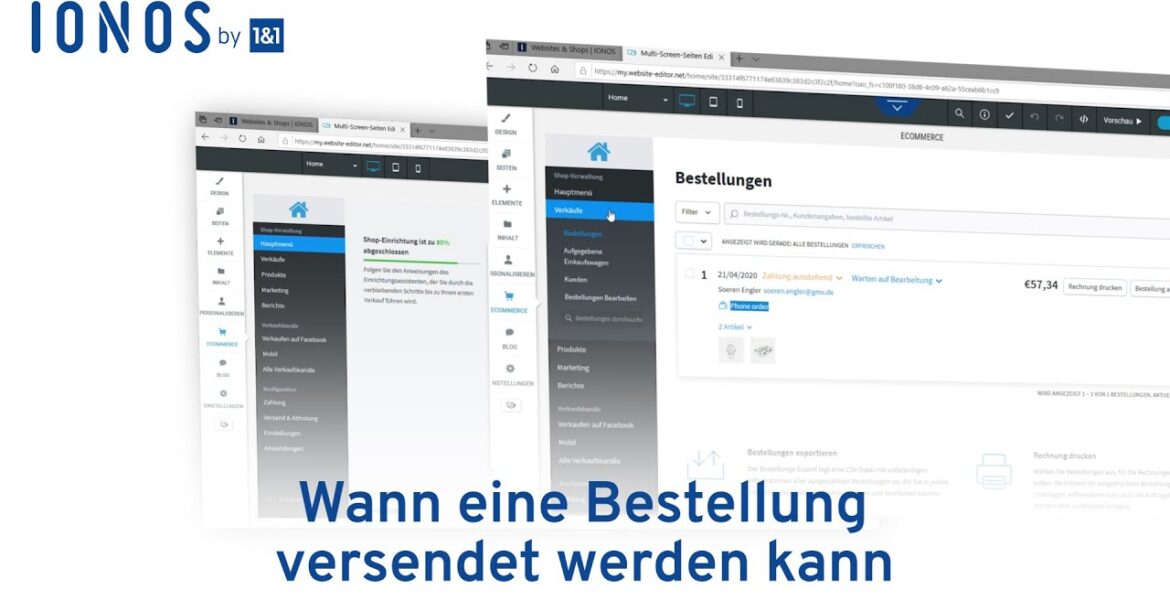
When can I send an order? | IONOS
Tutorial Hosting
Step-by-Step Tutorial: A Comprehensive Guide to [Insert Topic Here]
As technology continues to evolve, it’s becoming increasingly important to stay up-to-date with the latest trends and techniques. In this step-by-step tutorial, we’ll be exploring the ins and outs of [Insert Topic Here], a crucial skill for anyone looking to improve their digital literacy and online presence.
Step 1: Preparing Your Environment
Before we dive into the tutorial, it’s essential to ensure that your environment is set up correctly. This includes having the necessary software, hardware, and internet connection to complete the steps. Make sure you have the following:
- A computer or laptop with a stable internet connection
- The latest version of [software name] installed
- A compatible device or gadget (if required)
- Adequate storage space and memory
It’s also a good idea to clear out any unnecessary files or programs from your device to ensure optimal performance. Take a few minutes to organize your desktop, delete any unused files, and restart your device to ensure a clean slate.
Step 2: Setting Up Your Account
To get started, you’ll need to set up an account with [platform name]. Follow these steps to create a new account:
- Go to the [platform name] website and click on the "Sign Up" or "Create Account" button
- Enter your email address, password, and confirm password
- Fill out the required information, including your name, date of birth, and location
- Choose your preferred username and password
- Verify your account through the link sent to your email address
Step 3: Understanding the Basics
Before we dive into the advanced techniques, it’s essential to understand the basics of [topic name]. Take some time to explore the [platform name] dashboard, where you’ll find various features, options, and tools. Familiarize yourself with the layout, and take note of the following key elements:
- Navigation bar: The top menu bar that allows you to access different sections of the platform
- Workspace: The main area where you’ll be working on your projects
- Tools and Features: The various options and gadgets available to you for customization and functionality
Step 4: Creating Your First Project
It’s time to put your new account to the test! Follow these steps to create your first project:
- Click on the "Create New Project" button and select the type of project you want to create
- Choose a template or start from scratch
- Enter your project title and description
- Add any necessary files or resources (if required)
- Save and publish your project
Step 5: Customizing Your Project
Once you’ve created your project, it’s time to customize it to your liking. Here are a few tips to get you started:
- Change the way your project looks by experimenting with different themes, colors, and layouts
- Add interactive elements, such as animations, hover effects, and scrolling features
- Customize the font, size, and spacing to make your project more readable
Step 6: Publishing Your Project
Congratulations, you’ve completed your first project! Now it’s time to share it with the world. Here are the steps to publish your project:
- Go to the "Publish" section of your project
- Choose the platform(s) you want to publish on (if available)
- Enter the necessary details, such as title, description, and keywords
- Set the visibility settings for your project
- Click "Publish" to share your project with the world
Step 7: Maintaining Your Project
Congratulations, you’ve successfully published your project! Now it’s essential to maintain it to ensure it stays updated and relevant. Here are a few tips:
- Regularly update your project with fresh content, new features, and bug fixes
- Monitor your project’s performance and analytics to see how users are interacting with it
- Engage with your users through comments, feedback, and support
And that’s it! You’ve completed the [step-by-step tutorial] and have a comprehensive understanding of [topic name]. Keep in mind that this is just the beginning, and there’s always more to learn and explore.



